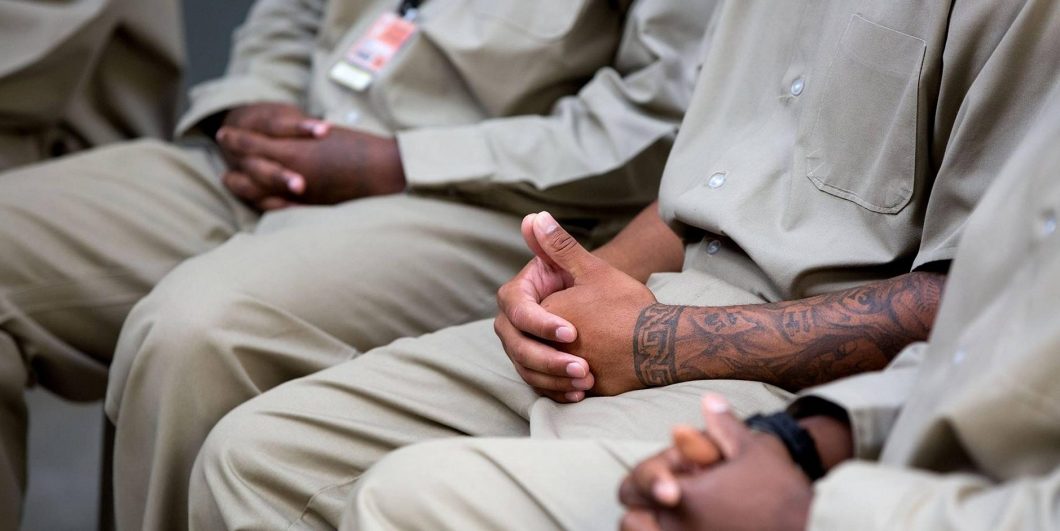Amid all the celebration of Godless as a “feminist Western,” commenters have ignored its post-September 11, pro-Western theme.
Do Plea Bargains and Jail Stays Contribute to Mass Incarceration?
I’m grateful for the responses to my essay as they give me a chance to develop and sharpen some of my arguments. First I’ll reply to Clark Neily, then Stephen Smith. Ralf Mangual gets a pass because he made the mistake of agreeing with me.
Neily says that America has too many trivial offenses on the books and these minor transgressions don’t merit incarceration. I’m sure he’s right about the statutory bloat. But that doesn’t prove his case. He needs to show that people are actually incarcerated for such infractions. Certainly, they aren’t imprisoned (as opposed to jailed) in any significant numbers as prisons are reserved for the worst of the worst, not pot smokers or sexting teens.
His second claim is that the plea system produces too many convictions, way more than would occur were we to employ the constitutional template for adjudication, viz., jury trials. Once again, Neily must demonstrate that people are actually unjustly or excessively incarcerated by guilty pleas. Without such a demonstration, Neily can make no more than an argument based on form, i.e., that the plea system doesn’t look like our ideal adjudication process.
By the way, the Founders’ jury trial was hardly a model of fair practice by contemporary standards since it was a summary proceeding conducted without counsel or a right to appeal. In fact, it looked more like a plea hearing, albeit with citizen factfinders.
While it is true that prosecutors can handle many more cases by avoiding jury trials it is also true that many plea agreements are indeed bargains, i.e., sentencing discounts for defendants. A fair assessment of the impact of the plea system on incarceration, therefore, would have to take account of the windfalls to defendants as well as the unfair burdens.
Neily’s third and final point is based on one of these burdens, the so-called trial penalty: the extra punishment imposed if the defendant is tried by jury as opposed to pleading guilty. Of course, the trial penalty cannot possibly be responsible for mass incarceration since, as Neily notes, trials account for only 5 percent of all adjudications. Given these numbers, even if we take trial acquittals into account, it is exceedingly likely that the plea discount reduces aggregate incarceration far more than the trial penalty increases it.[1]
I turn next to Professor Stephen F. Smith’s critique. Smith’s main point is that I should have included jail, not just prison inmates, in my examination of incarceration. I agree, of course, that jail is incarceration, and that there are, on any given day, approximately 745,200 people in jails in the United States.
What Smith overlooks, however, is the temporary nature of their confinement. The average length of time spent in jail is only 26 days, and for thousands it’s just the few days between arrest and an initial court appearance culminating in release.[2] Most of these in-and-out cases involve minor offenses. Jail inmates held longer than a day or two usually have been arrested for violent crimes and are considered dangerous or flight risks, or have been convicted and sentenced and are probably on their way to prison.
So the contribution of jails to so-called mass incarceration must be qualified by the brevity of the detention. We can quantify the difference between prisons and jails by the following formula:
Number of Inmates x Average Time Served (in days) ÷ 1,000,000 = Detention Days per Million
Prison: 1,439,808 x 949 days ÷ 1,000,000 = 1,366.4
Jail: 745,200 x 26 days ÷ 1,000,000 = 19.4
1,366.4 ÷ 19.4 = 70.4
In short, prisons are responsible for approximately 70 times more incarceration days per inmate than jails.
While it may be appropriate to include jail in the incarceration rate total we should bear in mind that the issues for jails and prisons are very different. Given the short stays and the relatively minor infractions involved the debate over jail seldom turns on the length of confinement, but rather whether there should be any confinement at all. This involves four issues: (1) whether unadjudicated persons should ever be incarcerated; (2) whether more arrested persons can safely be released instead of jailed; (3) whether we’ve overcriminalized victimless activities such as drug possession; and (4) whether arrest and jail are appropriate for homeless defendants with psychoses or addictions.
Regarding the first issue: While everyone can agree that no one should be punished without a determination of guilt, in United States v. Salerno, the Supreme Court rightly distinguished punishment and administrative confinement. It upheld pre-adjudication confinement because of the grave public risk in being compelled to release arrestees who have a record of repeated failures to return to court or serious acts of violence. This is an instance in which common sense has prevailed over philosophical rigidity.
Issue number two is playing out currently as “bail reform.” Multiple jurisdictions are trying to navigate between public safety and the integrity of judicial processes on the one hand, and individual freedom and its benefits on the other. So far it has been a bumpy road. New York State, for example, adopted a law mandating release for arrestees alleged to have violated numerous felonies and most misdemeanors – even where some of the crimes are violent or the defendant has a long record of failures to appear. Chicago took a different tack, adopting an algorithm intended to enable the safe release of certain arrestees, but initial analysis indicates that the releases caused an increase in crime.
Debates are also underway over the legalization of marijuana, a policy that could significantly reduce arrests for drug possession thereby thinning jail populations. Likewise up for discussion is whether jail is appropriate for some of the other minor offenses cited by Professor Smith, e.g., driving with a revoked license. A common thread in this discourse is the conflict between knock-on effects (such as driving accidents or escalation to hard drugs with marijuana), and freedom to engage in activities that don’t directly harm others. Another issue is the dearth of workable alternative enforcement mechanisms. What, for instance, can be done short of incarceration with defendants who are released and fail to pay fines or court fees?
Finally, much thought is being given to the best way to handle the homeless, especially when they are mentally ill or substance-addicted. Is arresting and briefly jailing them for loitering and “quality of life” offenses the best way to deal with this problem, or are there treatment modalities that would be more effective?
These public policy conversations are healthy and I welcome them.
But one of Smith’s concluding points is completely unpersuasive. Probation and parole, he says, contribute to the “extreme (and often senseless) severity of American criminal justice.” This won’t do. Probation is a sentence imposed on a guilty offender, true, but it is a sentence to freedom instead of incarceration. If the anti-incarcerationists have their way probation will be increasingly relied on as an alternative to jail or prison. It is part of the solution, not the problem.
Moreover, probationers are not, as Smith avers, “forever branded,” since probation periods usually last for one year, three at the most. Of course, a probationer’s record is relevant if he is sentenced for another crime. Surely, Professor Smith would not have us ignore a defendant’s crime history when sentencing as that would mean treating incorrigibles the same as first offenders.
Parole is quite a different matter. It is a reduction in sentence, permitting release from prison before an inmate’s full term is served. Contrary to Smith, parole does not apply to “minor, nonviolent crimes”; rather, it releases the often dangerous criminals that occupy our prison cells.[3] It is, therefore, risky business. Nonetheless, it reduces incarceration.
Whatever the problems with probation and parole, only Orwellian Newspeak could turn these counter-incarceration policies into contributors to mass incarceration.
[1] In 2009, in the 75 largest counties in the U.S., 66 percent of defendants charged with a felony were convicted, 53 percent pled guilty to a felony, 11 percent pled to a misdemeanor, 25 percent had the charges dismissed, and only 1 percent were acquitted. U.S. Dep’t of Justice, Bureau of Justice Statistics, Felony Defendants in Large Urban Counties, 2009 – Statistical Tables (2013), table 21. A recent study of federal criminal prosecutions found that 2 percent of defendants went to trial, and of these, 83 percent were convicted and 17 percent were acquitted. See John Gramlich, “Only 2% of Federal Criminal Defendants Go To Trial, and Most Who Do Are Found Guilty,” Pew Research Center, June 11, 2019.
[2] U.S. Dep’t of Justice, Bureau of Justice Statistics, Jail Inmates in 2017 (2019), table 8.
[3] U.S. Dep’t of Justice, Bureau of Justice Statistics, 2018 Update on Prisoner Recidivism: A 9-Year Follow-up Period (2005-2014) (2018) (finding that 5 out of 6 state prison inmates (83%) released in 2005 were rearrested within nine years of their discharge).


